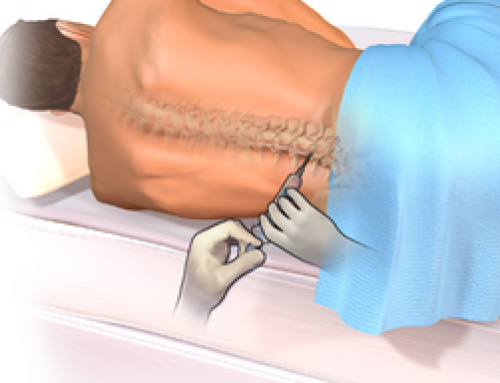Spinal tap is also known as lumbar puncture. Spinal tap involves inserting a needle between two vertebrae in the lower back to collect a sample of the cerebrospinal fluid for further examinations. The cerebrospinal fluid is the fluid normally surrounding the brain and the spinal cord. Through lumbar puncture, various medical conditions are diagnosed, such as meningitis, multiple sclerosis, Guillain-Barre syndrome, brain cancers and cancers of the spinal cord. But, does the procedure hurt?

Does a Spinal Tap Hurt?
The level of discomfort that a patient feels during a spinal tap varies. Some have described it as a painful experience, while others have laughed throughout the procedure. In general, the worst part of the spinal tap is during the injection of the local anesthesia. Once the needle is inserted, patients often describe it as an electric sensation moving down to legs or into the back, or as a deep pressure sensation in the back. No more than local anesthesia is needed to control the pain during a spinal tap.
Other People’s Experience
I have had a spinal tap done without any anesthesia. It is not the worst thing that can happen to a person. For people who have had an epidural, it is just about the same thing. However, headache and nausea can occur due to a change in the pressure once the cerebrospinal fluid is collected for examination.
The spinal tap procedure went smoothly for me. However, I had the worst headache ever in the next couple of days, so that I could not even lift my head from the pillow.
How Is Spinal Tap Performed?
Does a spinal tap hurt? Knowledge of the procedure may help you cope with the pain well. A spinal tap can be performed on an outpatient basis or while hospitalized. In general, a spinal tap procedure is done through the following steps.
- You will need to get naked and remove all of your jewelry.
- You will wear a gown.
- You will need to urinate before the spinal tap procedure in order to empty the bladder.
- You will need to lie down on your side on the examination table while tucking your chin to the chest and your knees to the abdomen. In this position, your back is arched, helping the intervertebral spaces become wider. Another position for a spinal tap procedure is by sitting on the edge of the examination table, with the arms over the examination table.
- A spinal tap procedure is a sterile procedure, so your doctor will clean your back with antiseptic solutions and wear sterile gloves.
- Local anesthesia is used in order to numb your back at the site where the needle will be inserted.
- After local anesthesia, the subarachnoidal space is reached with a needle, the area where the cerebrospinal fluid is located.
- Does a spinal tap hurt? Don't worry about this question now. It is very important to remain still while the needle is inserted. You will probably feel some pressure while the needle is inserted.
- Once the needle is in its place, the cerebrospinal fluid will be collected for further examination into the test tubes. The amount of cerebrospinal fluid collected is not more than one tablespoon.
- Sometimes, medications are inserted into the spinal canal after the collection of the cerebrospinal fluid.
- The needle is then removed, once the cerebrospinal fluid is collected or the medications are administrated.
- At the injection site, an adhesive bandage is placed.
Does a spinal tap hurt? A certain level of discomfort is normal during the spinal tap procedure. However, you should let your doctor know if you feel a headache, lightheadedness, numbness, or a tingling sensation during the spinal tap procedure.
Aftercare Instructions of Spinal Tap
Here are some aftercare tips to keep in mind.
- You will need to remain flat on the examination table for about one hour after the procedure in order for the inner hole to get closed.
- You will need to drink a lot of fluids for the next couple of days in order to promote the production of the cerebrospinal fluid.
- You can have a headache after a spinal tap procedure. A headache tends to get worse when standing up, while it tends to get better while lying down.
- Make sure to lie on your stomach or on your back for the next 24 hours following the spinal tap procedure. Don’t lie on the side.
- Avoid lifting heavy things for a couple of days following the spinal tap procedure.
- Don’t go to work for a couple of days. Your healthcare provider will let you know when it’s safe again to go to work, depending on your recovery. In general, you will be able to return to work and continue a normal life in one or two days after the procedure. However, sometimes due to various reasons, this period can be prolonged and you will need to rest for a longer period of time.
